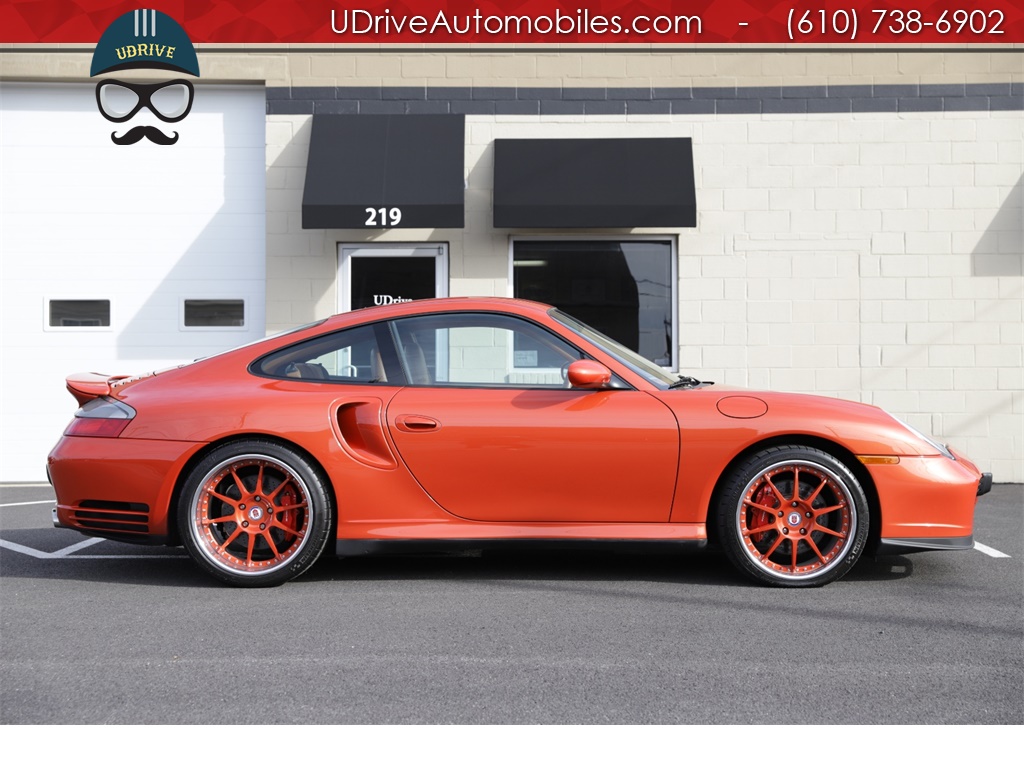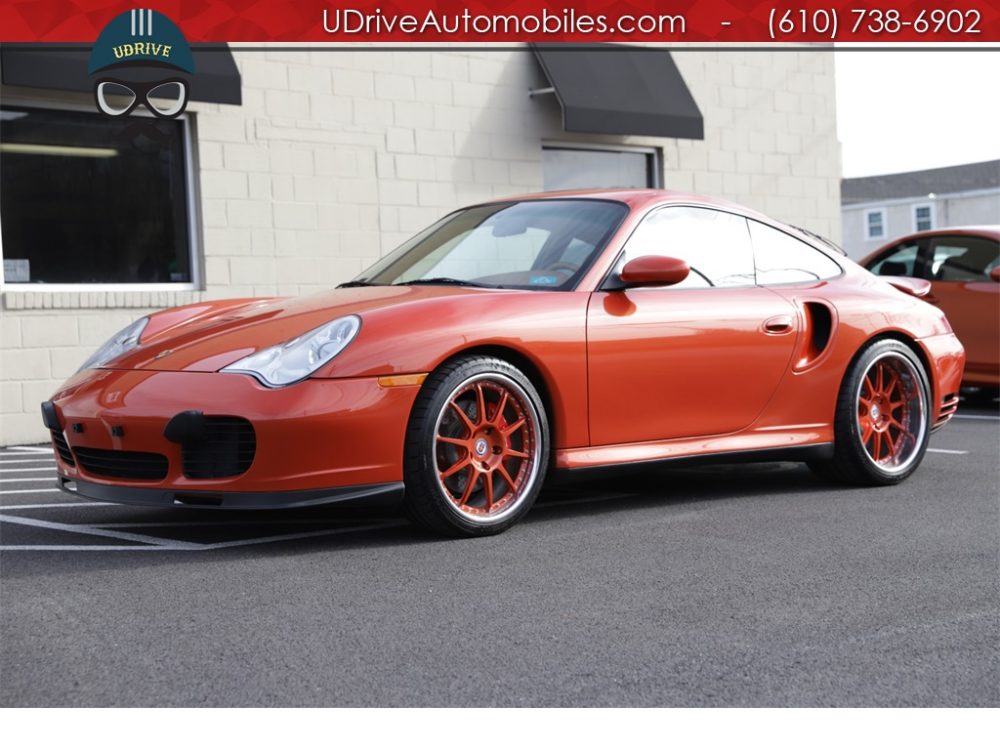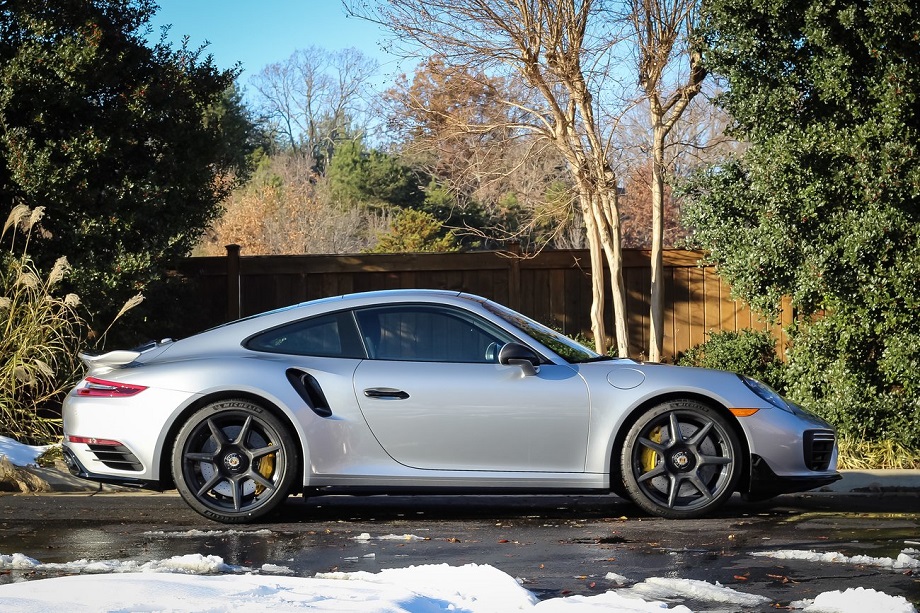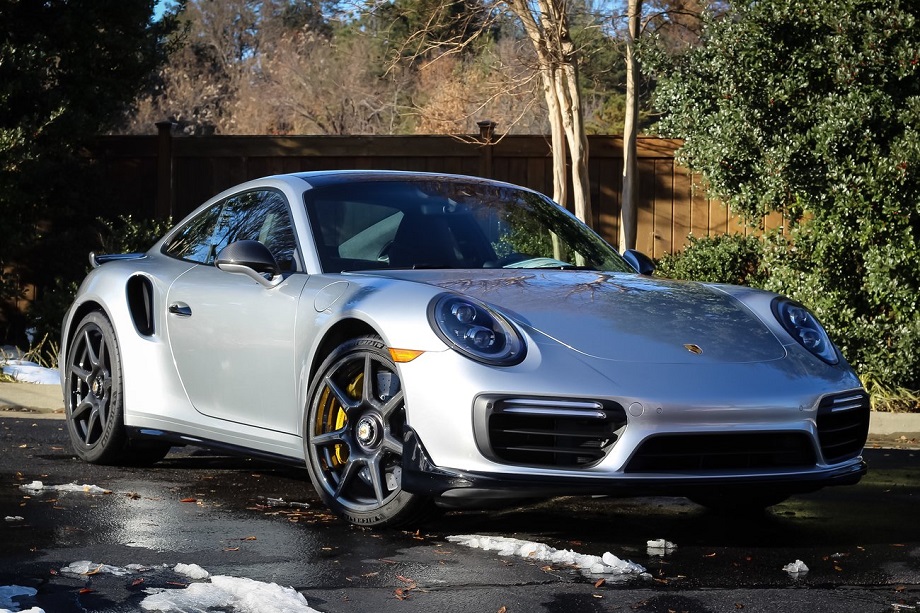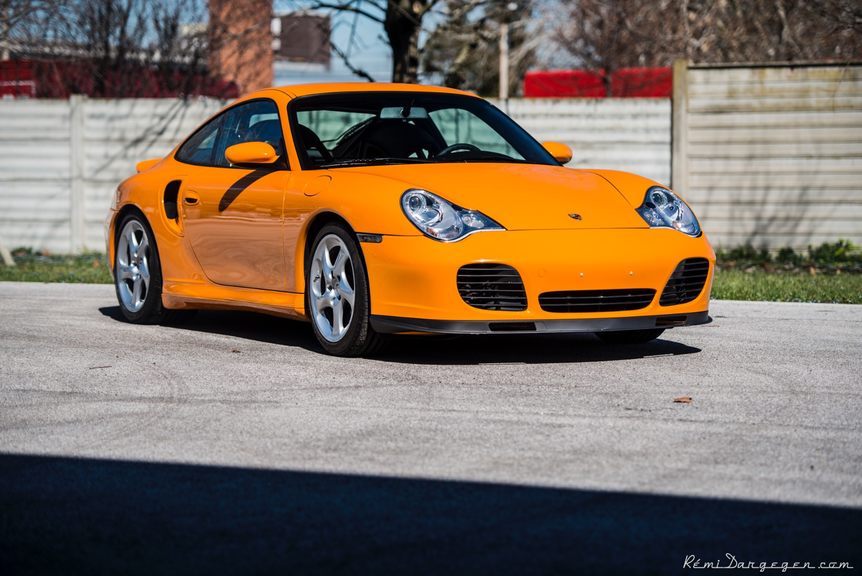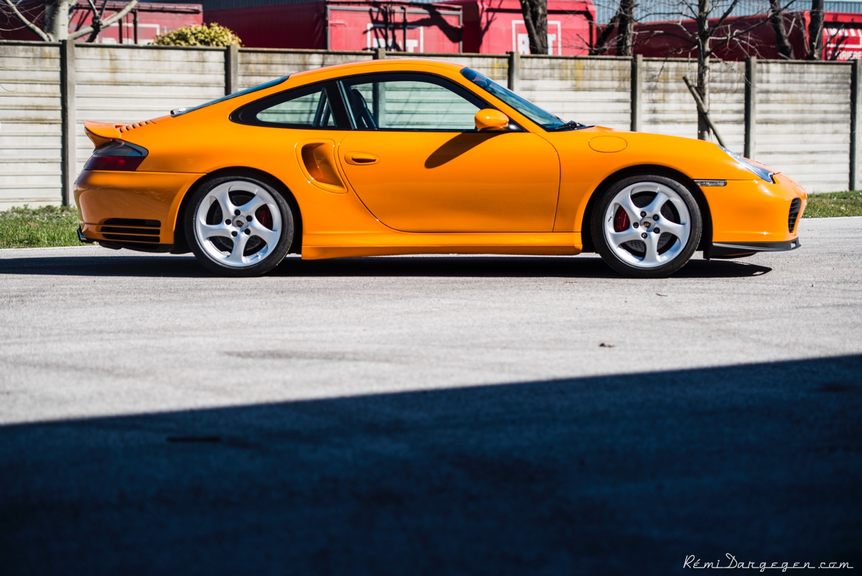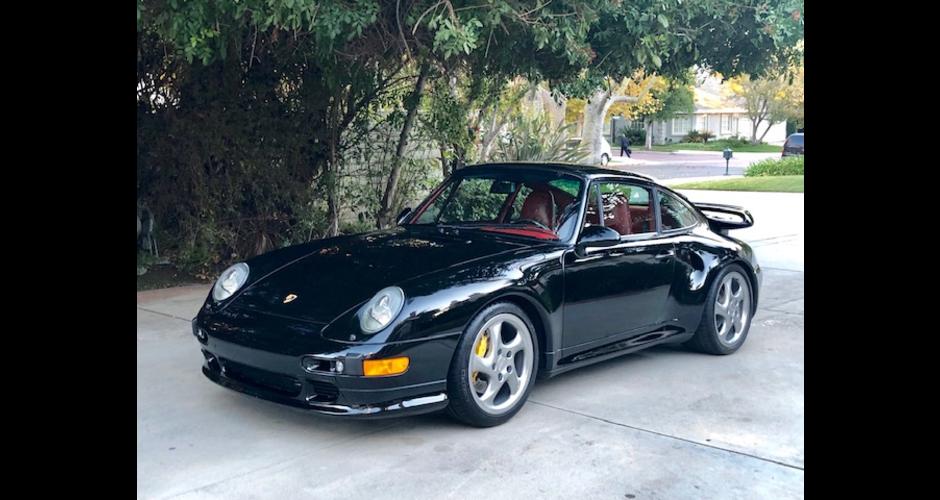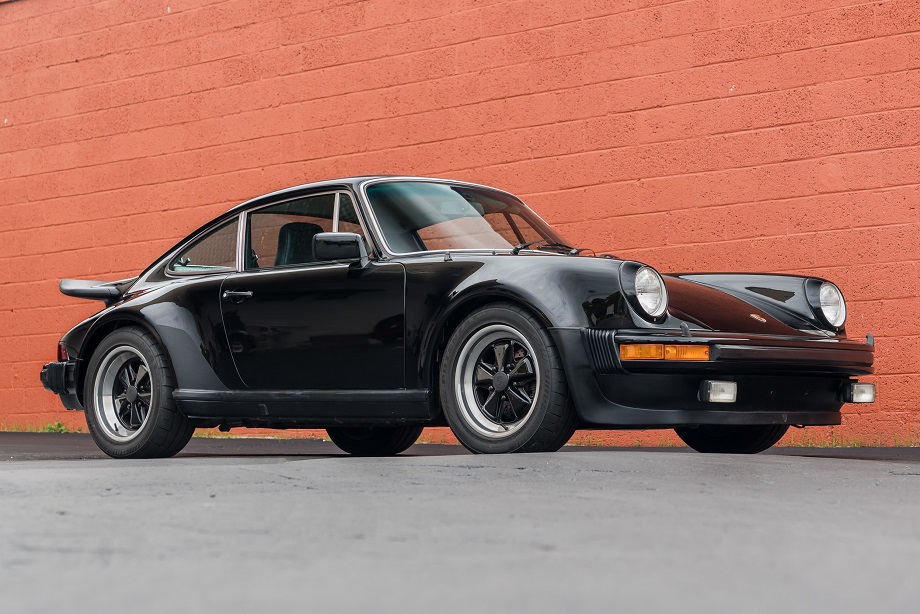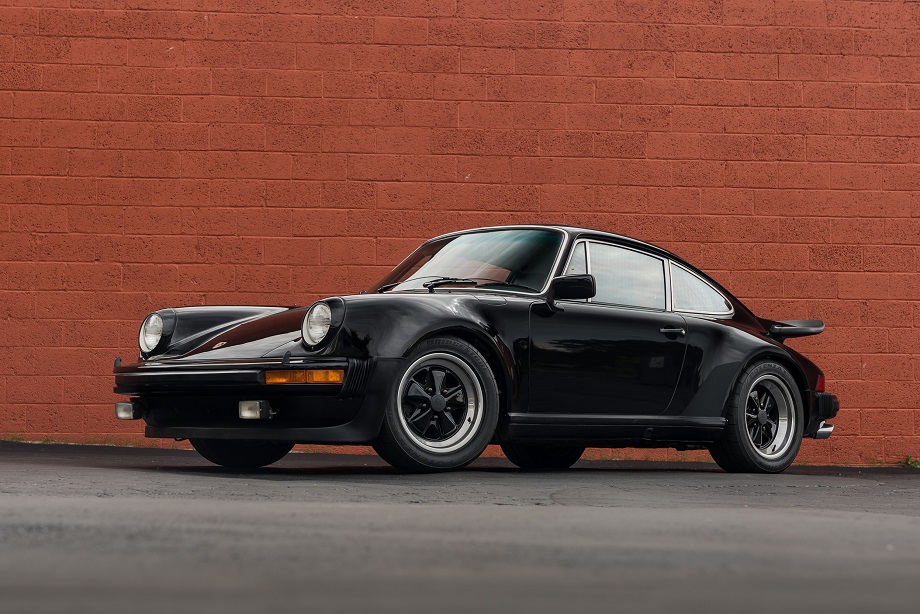Here we have a Zanzibar Red 2001 Porsche 911 Turbo Coupe. I have seen Zanzibar in the flesh only once. It’s quite rare, but I think it’s a wonderful color. The German version of its name is Orangerot perleffekt. It’s a somewhat complicated combination though does describe the color pretty well. As the name implies the color is an orange-red blend that has the added effect of pearlescent metallic that Porsche has utilized with a few different colors and especially in the ’90s. I suppose it’s kind of like if we took the old Blood Orange/Tangerine from the ’70s and then gave it some sparkle to somewhat diminish its overall showiness. On a 996TT it looks pretty electric!
Tag: 911 turbo
I feel like living a little lavishly today. Here we have a GT Silver Metallic 2019 Porsche 911 Turbo S. It’s brand new and waiting to be purchased. The Turbo S itself combines the best of luxury and performance that Porsche can offer. It’s supercar performance that ensconces you in leather and comfort. There’s 580 hp directed to all four wheels. The dual-clutch 7-speed PDK transmission either can shift smooth and comfortably or put it in Sport Plus mode and it’ll bang home shifts as quickly and ferociously as possible. Rear-axle steering, center-lock wheels, and massive 410 mm six-piston ceramic brakes keep everything under control. The Turbo S isn’t quite the top of the luxury performance food chain since Porsche also offers the Turbo S Exclusive, but this will have to do for now.
This particular example has decided to turn the dial up just a little bit and that’s the reason I’m interested in it. For starters, it has carbon fiber wheels. They’ll set you back a mere $14,980. Please do not bump them into a curb. It’s fitted with the Turbo Aerokit, which adds a little dynamism to the exterior because you wouldn’t want passersby confusing this with a regular 911. The interior too receives a few carbon fiber accents helping to tie interior and exterior together. Also in that interior is the optional Burmester sound system. Frankly, if you’re willing to spring for the carbon wheels, I’d be disappointed if you didn’t also add the better sound.
All together I really like this Turbo S. I wish it wasn’t Silver, but it does seem to be making the most of what these cars have to offer and in that regard it’s a phenomenal example. And while not quite the Turbo S Exclusive it does come in around $50K less than one of those very limited models (and that’s without factoring in ADM).
CLICK FOR DETAILS: 2019 Porsche 911 Turbo S Coupe on Rennlist
Comments closedI was scrolling through the Excellence Magazine classifieds and it seemed mostly typical. A lot doesn’t stand out and there was a lot that I had seen previously. I started to notice that there were a number of interesting cars available from Bologna, Italy. That seemed a little random. The cars were nice, but for the most part they weren’t really standing out to me given the high prices being asked. And suddenly I saw this one and stopped dead.
Ok, so the high price hasn’t changed, but I’d bet it’s near impossible to look through a list of Porsches and not take especial notice of this 2001 Porsche 911 Turbo Coupe. The color is listed as paint-to-sample Gelb Orange – meaning yellow-orange or perhaps amber orange. As far as I know it isn’t one of Porsche’s official offerings. I have never seen nor heard of it. It’s not quite Signal Orange nor Signal Yellow. The orange hue is a bit deeper than we see with Signal Yellow, but not quite as pronounced as Signal Orange. It sits almost squarely between the two.
Signal Yellow is my favorite Porsche color. It looks amazing on just about any 911 from any period. While it’s not fair to judge based off of a single car, I might actually like this one better.
CLICK FOR DETAILS: Gelb Orange 2001 Porsche 911 Turbo Coupe on Excellence Magazine
2 CommentsHere we have another 1997 Porsche 911 Turbo S. The final climax of the air-cooled 911 and quite rare. This one is not a ridiculously low-mileage garage queen like the last Turbo S I featured. While it’s hard to call any twenty-year-old 911 reasonably priced at almost $300K that’s pretty much exactly what we have with this one. Of course, there are reasons for that reasonableness. In this case, a touch over 80K miles and an engine rebuild account for the discount. Even so, is it worth it? It’s still around $100K more expensive than a low-mileage non-S 993TT and you likely could buy 2 of those if you allowed for comparable mileage and condition. Such is the cost of rarity.
CLICK FOR DETAILS: 1997 Porsche 911 Turbo S on eBay
3 CommentsI like a certain degree of completeness so why not go ahead and bookend things? This Black 1977 Porsche 930 Turbo Carrera resides at the other end of the 930 spectrum from the 1989 930 I featured on Monday. It isn’t from the first year of 930 production so this isn’t the perfect comparison, but since it is from one of the first two years when the 930 utilized a 3.0 liter turbocharged engine without an intercooler it still provides a glimpse into the model’s early days.
Looking at them both you could easily mistake one for the other. Their dimensions are the same even if the ’89 has gained a couple hundred pounds so you won’t notice much there. The most obvious difference is the rear spoiler. Porsche modified the 930’s spoiler in ’78 so as to accommodate the new intercooler that would feed air into the larger 3.3 liter engine. It has much more pronounced wings, which has garnered it the name tea tray compared with the whale tail of the 3.0 liter models. The fog lights too are different as they became integrated into the front bumper. We notice the same difference when comparing the 911SC and 3.2 Carrera.
While the outside is quite similar, the differences in the interior are much more apparent and show the evolutionary changes of the 911 in general over this time. We find a similar evolutionary development under the skin. Naturally power increased and with it came larger 4-piston ventilated disc brakes. The 930 now could stop as well as it could go. And, of course, in 1989 Porsche fitted the 930 with the G50 5-speed transmission, the biggest change these cars had seen since their displacement increase in 1978.
